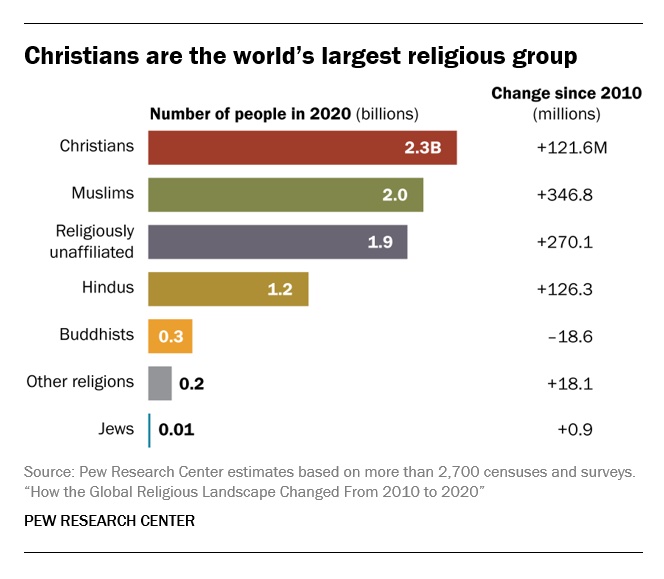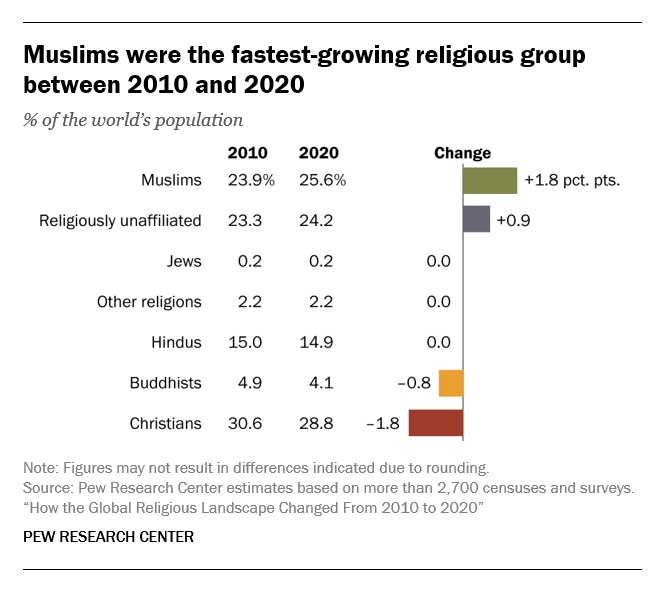Uncategorized
The Hanukkah merch market has exploded. But are Jews feeling more represented?
(JTA) — It was early November when Nicholas Wymer-Santiago walked into his local Target in Austin, Texas, and realized it was beginning to feel a lot like Hanukkah.
Instead of an endcap with a limited array of Hanukkah basics, as he had seen in past years, there stretched out a whole aisle of holiday products: pillows; dreidel-shaped pet toys; window decals; menorahs in the shape of lions, corgis and whales; and so much more. Even the $5-and-under impulse-buys section filled with seasonal products had a supply of Hanukkah goods, including a Star of David-shaped bowl and a set of dishes labeled “sour cream” and “applesauce.”
“In a good way, it was overwhelming at first, because there’s so much and I kind of want to buy it all,” Wymer-Santiago recalled feeling as he stood in the holiday section, looking up at a large photograph of a Hanukkah celebration alongside others showcasing Christmas.
The higher education administrator at the University of Texas decided to limit himself, at first taking home just a tea towel and a matching mug printed with a Hanukkah motif.
“And then I came back twice, maybe three times and each time I bought more and more items that I know I probably don’t need,” he said. “I think I’ve just had so much excitement about the novelty of it all, and having the ability to purchase these items, many of which I’ve never seen before.”
Wymer-Santiago is hardly alone in loading his cart with Hanukkah merchandise. Across the United States, big-box stores appear to be stocking more Hanukkah products than ever — and while off-color items such as Hanukkah gnomes and “Oy to the World” dish towels have raised eyebrows, the real story might be that American retailers have decked their shelves with menorahs, tableware and other items that are appropriate, affordable and often downright tasteful.
For many American Jews, the result is a sense of inclusion at a time of unease — although some are wrestling with what it means to have access to a fast-fashion form of Judaica.
“It is very exciting to go into Target or Michaels or a Walmart and to see Hanukkah merchandise,” said Ariel Scheer Stein, an influencer who shares crafting and holiday content for Jewish families on Instagram, where she has more than 20,000 followers.
Social media influencers in Miami, New York City and Denver respond to the flood of Hanukkah products at their local Target shops in 2022. (Instagram/@jamwithjamie/@cupofjo)
“The feeling is almost like pride and like we’re being seen and represented,” Stein added. “In a sea of Christmas … it feels really great, even if it’s a much smaller representation, that the Jewish holiday is there also and the Jewish community is being acknowledged and represented.”
The idea that retailers have stocked up on Hanukkah goods to make Jews feel represented is tempting, but it’s probably not the only reason for a shift in the market, according to Russell Winer, deputy chair of the marketing department at New York University’s Stern School of Business. He said that while an endcap — the small set of shelves at the end of an aisle — might sometimes be given over for symbolic purposes, the devotion of an entire aisle at the busiest time of the year is purely a business decision.
“These stores are very sophisticated in what they put in them,” Winer said. “They’re not going to put stuff on the shelves, especially at the holidays, if they don’t think they’re going to sell.”
There are signs that the Hanukkah market might be much wider than the proportion of Americans who identify as Jewish, 2.5%, would suggest. Numerator, a respected consumer trends polling firm, found in a survey of 11,000 consumers conducted in January 2022 that 14% of respondents said they were “definitely” or “probably” celebrating Hanukkah this year, compared to 96% for Christmas. More than half of the Hanukkah celebrants said they expected to spend more than $50 on the holiday — suggesting that retailers can expect hundreds of millions of dollars in Hanukkah spending this year.
Part of that marketplace is the growing number of families in which Hanukkah is celebrated alongside other holidays, usually Christmas. Most American Jews who have married in the last decade have done so to people who are not Jewish, according to the 2020 Pew study of American Jews; most of them say they are raising their children exclusively or partly as Jews. They may want to have products that allow Hanukkah to share the stage equitably with the other celebrations in their family.
“I’m not terribly surprised from a cultural standpoint that there’s more merchandise,” said Winer, who is Jewish. He said he and his wife had purchased Hanukkah stockings for their grandchildren, who are being raised in two faith traditions. (Evangelical Christians and Messianics, those who adopt Jewish practices while believing in the divinity of Jesus, also represent an emerging market for Jewish ritual objects.)
Stein offered another theory to explain the uptick in interest in Hanukkah products: the fact that social media and Zoom meetings have made home lives more transparent than ever.
“The communal sharing of lives, whether you’re an influencer or even my friends on Facebook showing what their display is this year or taking a picture of a recipe they were really proud of, making latkes from scratch — there’s just more visibility than there has been in the past,” she said. “And that’s probably a factor.”
Whatever the reasons, shoppers are noticing. Like Stein and countless other Jewish influencers, Rabbi Yael Buechler, a devoted observer of Jewish consumer trends, has offered tours of Hanukkah merchandise to her social media followers. Wearing Hanukkah pajamas that she designed and sells, Buechler has posted 14 videos to TikTok showcasing the Hanukkah collections of national retailers and assigns each store a “yay” or “nay” based on several metrics, including whether items display accurate Hebrew or appear to be generic blue-and-white items being passed off as made for the holiday. The videos, which have been viewed hundreds of thousands of times, have given her a broad view of what’s available to the Hanukkah consumer.
Welcome to the second installment of Hanukkah merch: YAY or NAY? .@target edition .Items were rated by:If the product was beyond blue & white Correct Hebrew Whether the Hanukkiyah was kosher If the Hanukkah pun was goodWhether animal was Hanukkah punnable (i.e. Menorasaurus) .#hanukkahiscoming #hanukkahfails #hanukkahcountdown #hanukkahyayornay #yayornay #hanukkah2022 #targetfinds #hanukkahpresents #hanukkahpjs #hanukkahgifts #hanukkahcheck #chanukah2022
“I see a lot more products this year than any other year,” said Buechler, who works at a Jewish school outside New York City. “I see a lot of new prints. I see more creativity in the market. I see more humor in the market.”
Like Wymer-Santiago, Buechler said Target, which has 2,000 locations across the United States, stood out as offering the widest array of products and the lowest proportion of “fails,” or products that miss the mark religiously, culturally or aesthetically.
“They have really stepped it up,” Buechler said. “Target also carries the Nickelodeon ‘Rugrats’ Hanukkah sweatshirts that are just brilliant. … I would definitely say they get the biggest ‘yay’ for this year.”
Target, which has a track record of using inclusive imagery in its advertisements and in-store promotions, declined to answer questions about its offerings, including how much bigger its Hanukkah collection is this year than in the past and how widely the products for Jewish buyers have been distributed. But a spokesperson said the feeling Wymer-Santiago and Stein described after visiting their local stores is exactly what the company is trying to cultivate.
“Target is committed to creating an inclusive guest experience in which all guests feel represented,” the spokesperson wrote in an email. The spokesperson noted that Target’s Hanukkah assortment “was developed in collaboration with Jewish team members and input from our Jewish employee resource group” and crosses several of the retailer’s in-house brands.
One of those lines, Opalhouse by Jungalow, was created by a Jewish artist, Justina Blakeney. Last year, Blakeney’s first Hanukkah collection included plates and pillows, as well as a gold menorah shaped like a dove. This year, Blakeney added new pillow designs and a clay menorah.
Target’s website prominent promotes Hanukkah products, including from a house brand by a Jewish creator named Justina Blakeney. (Screenshot)
“If I could go back in time and tell elementary-school-aged Justina (or ‘Tina’ as I was called back then) that I would have a chance to design a Hanukkah collection for Target, I would have lost my mind,” she wrote in an October blog post revealing the collection.
Hanukkah goods have always been widely available through Jewish merchandisers and at synagogue bazaars — but those products have been available only to people who already engaged in Jewish communities. Amazon and other online retailers have increased access, but only for people who are hunting for Hanukkah supplies. A Hanukkah aisle at Target, in contrast, reaches the many Jews who may not already have robust holiday traditions.
Stein, who said she particularly regretted not snapping up a marble dreidel sculpture that quickly sold out at Target, said she saw only benefits in promoting major retailers’ Hanukkah offerings, even if doing so has made her something of an unpaid advertiser at times.
“Right now, especially with the rise of antisemitism, if there are ways that we can spur Jewish joy — and for me, that’s by sharing and inspiring people with different kinds of Hanukkah merch and home decor and jewelry — I think that’s great,” she said.
Not everyone is thrilled by the shift in the marketplace. The sweeping Hanukkah displays are drawing criticism from those who have long lamented that the American primacy of Christmas has caused Jews to focus too much on a minor holiday, while leaving holidays with more religious significance relatively uncelebrated.
“I think: What would it feel like to see a giant Shavuot display?” Wymer-Santiago said.
The fast-fashion aspect of the big-box retailers’ offerings, many of which are imported from China, also raises concerns about whether easy access to trendy Judaica comes at environmental and cultural costs.
“How about we don’t extract fossil fuels to make crap that no one needs and that makes Jewish communities less distinctive?” asked Dan Friedman, a writer and longtime climate activist, though he emphasized that systemic change, rather than tweaks to purchasing decisions by Jewish consumers, is needed to avert climate catastrophe.
For Buechler and others, the benefits of a mass-market Hanukkah merchandise boom outweigh any possible drawbacks.
“As a rabbi, I am all for anything that will make Hanukkah celebrations more engaging and potentially lengthen a family celebration,” said Buechler, who said her own collection had outgrown the four tubs it occupied several months ago, and that one of her favorite purchases was of a Hanukkah sweater for lizards that she bought for a friend’s guinea pig.
“I really do believe that owning different kinds of Hanukkah merch, whether apparel or otherwise, will increase the likelihood that a family will celebrate with friends with family for more nights than they would have last year,” she added.
Nicholas Wymer-Santiago takes a selfie showing off his menorah collection, mostly acquired at his local Target in Austin, Texas. (Courtesy of Wymer-Santiago)
Wymer-Santiago plans to celebrate the holiday with his family in Ohio, meaning that he will be leaving behind much of this year’s Target haul in his Austin apartment: the device that makes dreidel-shaped waffles, the window decals that advertise the holiday to passersby, the giant dreidel-shaped jar that he has filled with, well, dreidels. He said he planned to make room in his suitcase for at least one item: a $5 menorah that reminds him of his dog.
Wymer-Santiago said a piece of him worried that Target was taking advantage of his excitement about Jewish representation, the way it has been criticized for doing around LGBTQ Pride celebrations, to sell him stuff he doesn’t need.
“Every time I buy something from Target in general, but definitely for Hanukkah, I think about this,” he said. “But then I think: This thing is so cute. And I just need it.”
—
The post The Hanukkah merch market has exploded. But are Jews feeling more represented? appeared first on Jewish Telegraphic Agency.
Uncategorized
How the Global Religious Landscape Changed from 2010 to 2020

Muslims grew fastest; Christians lagged behind global population increase
• Christians are the world’s largest religious group, at 28.8% of the global population. They are a majority everywhere except the Asia-Pacific and Middle East-North Africa regions. Sub-Saharan Africa has surpassed Europe in having the largest number of Christians. But Christians are shrinking as a share of the global population, as millions of Christians “switch” out of religion to become religiously unaffiliated.

• Muslims are the world’s second-largest religious group (25.6% of the world’s population) and the fastest-growing major religion, largely due to Muslims’ relatively young age structure and high fertility rate. They make up the vast majority of the population in the Middle East-North Africa region. In all other regions, Muslims are a religious minority, including in the Asia-Pacific region (which is home to the greatest number of Muslims).

• The religiously unaffiliated population is the world’s third-largest religious category (24.2% of the global population), after Christians and Muslims. Between 2010 and 2020, religiously unaffiliated people grew more than any group except Muslims, despite their demographic disadvantages of an older age structure and relatively low fertility. The unaffiliated made up a majority of the population in 10 countries and territories in 2020, up from seven a decade earlier.
• Hindus are the fourth-largest religious category (14.9% of the world’s population), after Christians, Muslims and religiously unaffiliated people. Most (99%) live in the Asia-Pacific region; 95% of all Hindus live in India alone. Between 2010 and 2020, Hindus remained a stable share of the world’s population because their fertility resembles the global average, and surveys indicate that switching out of or into Hinduism is rare.
• Buddhists (4.1% of the world’s population) are the only group in this report whose number declined worldwide between 2010 and 2020. This was due both to religious disaffiliation among Buddhists in East Asia and to a relatively low birth rate among Buddhists, who tend to live in countries with older populations. Most of the world’s Buddhists (98%) reside in the Asia-Pacific region, the birthplace of Buddhism.
• Jews, the smallest religious group analyzed separately in this report (0.2% of the world’s population), lagged behind global population growth between 2010 and 2020 – despite having fertility rates on par with the global average – due to their older age structure. Most Jews live either in North America (primarily in the United States) or in the Middle East-North Africa region (almost exclusively in Israel).
These are among the key findings of a Pew Research Center analysis of more than 2,700 censuses and surveys, including census data releases that were delayed due to the coronavirus pandemic. This report is part of the Pew-Templeton Global Religious Futures project, which analyzes global religious change and its impact on societies around the world. Funding for the Global Religious Futures project comes from The Pew Charitable Trusts and the John Templeton Foundation.
Uncategorized
Antisemitism in some unlikely places in America

By HENRY SREBRNIK Antisemitism flourishes in a place where few might expect to confront it – medical schools and among doctors. It affects Jews, I think, more emotionally than Judeophobia in other fields.
Medicine has long been a Jewish profession with a history going back centuries. We all know the jokes about “my son – now also my daughter – the doctor.” Physicians take the Hippocratic Oath to heal the sick, regardless of their ethnicity or religion. When we are ill doctors often become the people who save us from debilitating illness and even death. So this is all the more shocking.
Yes, in earlier periods there were medical schools with quotas and hospitals who refused or limited the number of Jews they allowed to be affiliated with them. It’s why we built Jewish hospitals and practices. And of course, we all shudder at the history of Nazi doctors and euthanasia in Germany and in the concentration camps of Europe. But all this – so we thought – was a thing of a dark past. Yet now it has made a comeback, along with many other horrors we assume might never reappear.
Since the Hamas attack on Israel on October 7, 2023, there has been a resurgence of antisemitism, also noticeable in the world of healthcare. This is not just a Canadian issue. Two articles on the Jewish website Tablet, published Nov. 21, 2023, and May 18, 2025, spoke to this problem in American medicine as well, referencing a study by Ian Kingsbury and Jay P. Greene of Do No Harm, a health care advocacy group, based on data amassed by the organization Stop Antisemitism. They identified a wave of open Jew-hatred by medical professionals, medical schools, and professional associations, often driven by foreign-trained doctors importing the Jew-hatred of their native countries, suggesting “that a field entrusted with healing is becoming a licensed purveyor of hatred.”
Activists from Doctors Against Genocide, American Palestinian Women’s Association, and CODEPINK held a demonstration calling for an immediate cease-fire in Gaza at the Hart Senate Office Building in Washington, D.C., Nov. 16, 2023, almost as soon as the war began. A doctor in Tampa took to social media to post a Palestinian flag with the caption “about time!!!” The medical director of a cancer centre in Dearborn, Michigan, posted on social media: “What a beautiful morning. What a beautiful day.” Even in New York, a physician commented on Instagram that “Zionist settlers” got “a taste of their own medicine.” A Boston-based dentist was filmed ripping down posters of Israeli victims and a professor at the University of Pennsylvania Perelman School of Medicine did the same. Almost three-quarters of American medical associations felt the need to speak out on the war in Ukraine but almost three-quarters had nothing to say about the war in Israel.
Antisemitism in academic medical centres is fostering noxious environments which deprive Jewish healthcare professionals of their civil right to work in spaces free from discrimination and hate, according to a study by the Data & Analytics Department of StandWithUs, an international, non-partisan education organization that supports Israel and fights antisemitism.
“Academia today is increasingly cultivating an environment which is hostile to Jews, as well as members of other religious and ethnic groups,” StandWithUs director of data and analytics, and study co-author, Alexandra Fishman, said on May 5 in a press release. “Academic institutions should be upholding the integrity of scholarship, prioritizing civil discourse, rather than allowing bias or personal agendas to guide academic culture.”
The study, “Antisemitism in American Healthcare: The Role of Workplace Environment,” included survey data showing that 62.8 per cent of Jewish healthcare professionals employed by campus-based medical centres reported experiencing antisemitism, a far higher rate than those working in private practice and community hospitals. Fueling the rise in hate, it added, were repeated failures of DEI (diversity, equity, and inclusion) initiatives to educate workers about antisemitism, increasing, the report said, the likelihood of antisemitic activity.
“When administrators and colleagues understand what antisemitism looks like, it clearly correlates with less antisemitism in the workplace,” co-author and Yeshiva University professor Dr. Charles Auerbach reported. “Recognition is a powerful tool — institutions that foster awareness create safer, more inclusive environments for everyone.”
Last December, the Data & Analytics Department also published a study which found that nearly 40 per cent of Jewish American health-care professionals have encountered antisemitism in the workplace, either as witnesses or victims. The study included a survey of 645 Jewish health workers, a substantial number of whom said they were subject to “social and professional isolation.” The problem left more than one quarter of the survey cohort, 26.4 per cent, “feeling unsafe or threatened.”
The official journal of the Alliance for Academic Internal Medicine concurs. According to “The Moral Imperative of Countering Antisemitism in US Medicine – A Way Forward,” by Hedy S. Wald and Steven Roth, published in the October 2024 issue of the American Journal of Medicine, increased antisemitism in the United States has created a hostile learning and practice environment in medical settings. This includes instances of antisemitic behaviour and the use of antisemitic symbols at medical school commencements.
Examples of its impact upon medicine include medical students’ social media postings claiming that Jews wield disproportionate power, antisemitic slogans at the University of California, Los Angeles (UCLA) David Geffen School of Medicine, antisemitic graffiti at the University of California, San Francisco (UCSF) Cancer Centre, Jewish medical students’ exposure to demonization of Israel diatribes and rationalizing terrorism; and faculty, including a professor of medicine at UCSF, posting antisemitic tropes and derogatory comments about Jewish health care professionals. Jewish medical students’ fears of retribution, should they speak out, have been reported. “Our recent unpublished survey of Jewish physicians and trainees demonstrated a twofold increase from 40% to 88% for those who experienced antisemitism prior to vs after October 7,” they stated.
In some schools, Jewish faculty are speaking out. In February, the Jewish Faculty Resilience Group at UCLA accused the institution in an open letter of “ignoring” antisemitism at the School of Medicine, charging that its indifference to the matter “continues to encourage more antisemitism.” It added that discrimination at the medical school has caused demonstrable harm to Jewish students and faculty. Student clubs, it said, are denied recognition for arbitrary reasons; Jewish faculty whose ethnic backgrounds were previously unknown are purged from the payrolls upon being identified as Jews; and anyone who refuses to participate in anti-Zionist events is “intimidated” and pressured.
Given these findings, many American physicians are worried not only as Jewish doctors and professionals, but for Jewish patients who are more than ever concerned with whom they’re meeting. Can we really conceive of a future where you’re not sure if “the doctor will hate you now?”
Henry Srebrnik is a professor of political science at the University of Prince Edward Island.
Uncategorized
The 2025 Toronto Walk (and talk ) for Israel

By GERRY POSNER There are walks and then there are walks. The Toronto UJA Walk for Israel on May 25, 2025 was one of a kind, at least as far as Canada and Jews are concerned. The number of people present was estimated to be 56,000 people or 112,000 total shoes. (How they get to that number is bewildering to me, since there is no one counting). This was 6,000 more than last year. Whether it is true or not, take it from me, it was packed. The synagogues in Canada should be so fortunate to get those numbers in total on High Holidays. The picture here gives you a sense of the size of the crowd.

This was my first walk in Toronto for Israel and I was with my granddaughter, Samantha Pyzer (not to forget her two friends whom she managed to meet at the site, no small feat, even with iPhones as aids). The official proceedings began at 9:00 a.m. and the walk at 10:00 a.m. There was entertainment to begin with, also along the way, and at the finish as well. The finish line this year was the Prosserman Centre or the JCC as it often called. The walk itself was perhaps 4 kilometres – not very long, but the walking was slow, especially at the beginning. There were lots of strollers, even baby carriages, though I did not see any wheelchairs. All ages participated on this walk. I figured, based on what I could see on the faces of people all around me that, although I was not the oldest one on the walk, I bet I made the top 100 – more likely the top 20.
What was a highlight for me was the number of Winnipeggers I met, both past and present. Connecting with them seemed to be much like a fluke. No doubt, I missed la lot of them, but I saw, in no particular order (I could not recall the order if my life depended on it): Alta Sigesmund, (who was, a long time ago, my daughter Amira’s teacher), Marni Samphir, Karla Berbrayer and her husband Dr. Allan Kraut and family. Then, when Samantha and I made it to the end and sat down to eat, I struck up a conversation with a woman unknown to me and as we chatted, she confirmed her former Winnipeg status as a sister-in- law to David Devere, as in Betty Shwemer, the sister of Cecile Devere. I also chanced upon Terri Cherniack, only because I paused for a moment and she spotted me. As we closed in near the finish, I met ( hey were on their way back), Earl and Suzanne Golden and son Matthew, as well as Daniel Glazerman. That stop caused me to lose my granddaughter and her pals. Try finding them amid the noise and size of the crowd – but I pulled it off.

As I was in line to get food, I started chatting with a guy in the vicinity of my age. I dropped the Winnipeg link and the floodgates opened with “ Did I know Jack and Joanie Rusen?” So that was an interesting few minutes. And I was not too terribly surprised to come across some of my Pickleball family. All of these meetings, along with spotting some of my sister’s family and other cousins, were carried on with the sound of the shofar as we moved along the way. In short, this was a happening. Merchants selling a variety of products, many of them Israeli based, were in evidence and, of course, the day could not have ended without the laying of tefillin, aided by Chabad, who have perfected the procedure to take less than a minute. See the photo. Chabad had a willing audience.
Aside from the joy of sharing this experience with my granddaughter, the very presence of all these Jews gathered together for a common reason made this day very special to me. However, there was a downside to the day. The downside was that, as we began to walk back to our car there was no other way I could figure out how to return when the rains came and came. While we walked faster, we were impeded by pouring rain and puddles. But Samantha wanted to persevere, as did I. We made it, but were drenched. My runners are still drying out as I write this two days later.
What with being surrounded by 56,000 people, the noise, the slow walking, and the rain, I can still say the day was a real highlight for me – one of the better moments since our arrival in Toronto in 2012. As well as the photos we took along the way, I have the reminder of the day, courtesy of the UJA, as evidenced from the photo. It was not just the walk, but the talk that accompanied the walk that made it so worthwhile for me. I would do it again, minus the rain.
